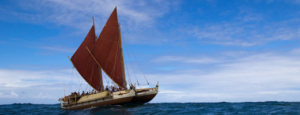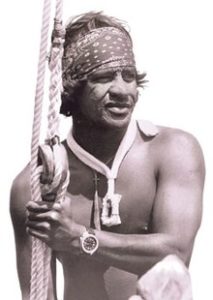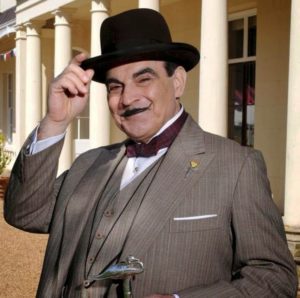The Rev. Noah Van Niel
St. John the Evangelist
April 22, 2018
Easter 4 (B): Acts 4:5-12; Psalm 23; 1 John 3:16-24; John 10:11-18
On March 16th, 1978 the Hokule’a, a traditional Polynesian voyaging canoe departed from Honolulu on a 30 day trip from Hawaii to Tahiti. (For those of you who have seen the Disney movie, Moana, you’ll have an idea what it looked like.) The Hokule’a was the crown jewel of the Polynesian Voyaging Society which sought to recreate traditional Polynesian seafaring  techniques and celebrate that cultural history. The ship had made the voyage from Hawaii to Tahiti two years earlier, but on this day in ’78 they were trying a slightly different route and things did not go as well. Bowing to pressure from the press and political officials, they set sail in questionable conditions. Five hours later they got struck by a large wave and capsized, about 12 miles south of the island of Molokai. The crew hung on to the vessel overnight drifting farther and farther from land. Their flares weren’t seen, their rescue signals went undetected.
techniques and celebrate that cultural history. The ship had made the voyage from Hawaii to Tahiti two years earlier, but on this day in ’78 they were trying a slightly different route and things did not go as well. Bowing to pressure from the press and political officials, they set sail in questionable conditions. Five hours later they got struck by a large wave and capsized, about 12 miles south of the island of Molokai. The crew hung on to the vessel overnight drifting farther and farther from land. Their flares weren’t seen, their rescue signals went undetected.
On board as a member of the crew that day was Hawaiian surfing legend and lifeguard Eddie Aikau. Eddie had made a name for himself by surfing, with glee, the biggest waves on Oahu’s famous North Shore and by being a fearless lifeguard who would rescue any swimmer or surfer from any situation no matter how dangerous. While he served as lifeguard of Waimea bay—the epicenter of the North Shore high surf—he made over a thousand rescues and not one life was lost. In 1971 he was named lifeguard of the year. And the phrase “Eddie would go,” became an island refrain, referring to the fearlessness and selflessness of this humble Hawaiian surfer.
Eddie had made a name for himself by surfing, with glee, the biggest waves on Oahu’s famous North Shore and by being a fearless lifeguard who would rescue any swimmer or surfer from any situation no matter how dangerous. While he served as lifeguard of Waimea bay—the epicenter of the North Shore high surf—he made over a thousand rescues and not one life was lost. In 1971 he was named lifeguard of the year. And the phrase “Eddie would go,” became an island refrain, referring to the fearlessness and selflessness of this humble Hawaiian surfer.
As morning dawned with no rescue in sight and the capsized vessel floating further and further from shore, Eddie convinced his crew mates to let him take his surfboard and paddle for land. He figured he could make the 12 mile swim (though by now it was probably much more) to the coast of Lanai, on his board. But he eschewed a life vest as it inhibited his ability to paddle. And so, with a prayer on his lips and aloha in his heart, off went Eddie, into the Pacific, swimming for land, looking for help. He was never seen again. Continue reading

